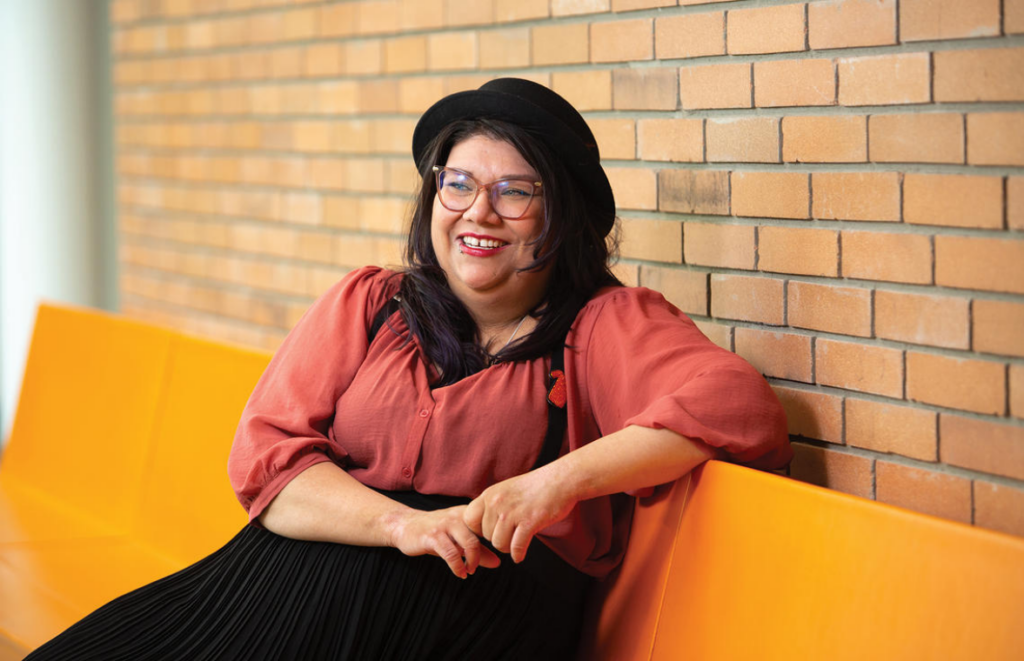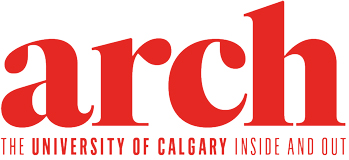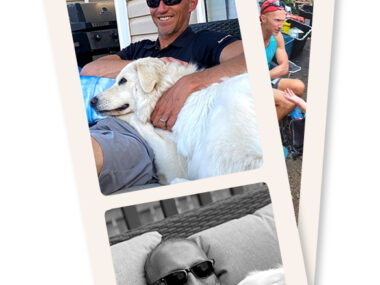
Written by Keeta Gladue, BSW’19
Growing up Indigenous in Canada, I did not know the names or faces of Indigenous heroes. The only famous Indigenous woman I knew was Pocahontas and, boy, did Disney do a number on her. I’m a storyteller and I know that stories matter. As a graduate student in the Faculty of Social Work, I am trying to tell new stories through my research and scholarship. Stories of Indigenous people’s extraordinary undauntedness in the face of oppression. Stories of our flourishing. Stories of Indigenous futurism. Stories of community and the power of Aunties. Stories of Indigenous women who change the world. So, here, I would like to introduce you to female Indigenous pathfinders, warriors, and resistors who you likely don’t know, but you should.
- Dr. Susan LaFlesche Picotte, MD is widely acknowledged as the first Indigenous person to earn a medical degree.
- Jean Cuthand Goodwill, a Cree woman from the Little Pine First Nation, was the first Indigenous person in Saskatchewan and one of the first in Canada to become a registered nurse.
- Elizabeth Wanamaker Peratrovich petitioned the Governor of Alaska to introduce the Anti-Discrimination Act of 1945 to end the businesses practice of denying Indigenous people’s access with “No dogs, no Natives” signs. This law was the first Alaskan law that made it illegal to discriminate based on race.
- Mary Golda Ross was the first known Indigenous female engineer. She worked at Skunk Works, was one of the writers of NASA’s Space Travel Handbook and designed the first fighter jet to break the sound barrier
- Anna Mae Pictou Aquash, from Nova Scotia, was a Mi’kmaq activist who became famous in the 1970’s Indigenous rights movement. Threatened by both the FBI and CIA for her advocacy, Anna was assassinated in South Dakota in 1975. Two men were convicted in her murder decades later.
- Elsie Knott of the Curve Lake First Nation was the first female Chief elected under the Indian Act in 1954. Ninety women have been elected Chief across Canada since then.
These stories are meant to spark your curiosity, as they did mine. I only found these women because, as an adult, I went looking for them. I felt their lack; felt the empty spaces in my Canadian education — the holes in my knowledge where my ancestors stood, invisible to me, but waiting.
I deserved to know these stories, just as my niblings (a gender-neutral form of nephews and nieces) and all children deserve to know them today. Canada can show its dedication to Truth and Reconciliation by recognizing and teaching Indigenous excellence, history, resistance, and strength. Know our leaders’ names, learn our faces, and share their stories. Consider this your invitation to get nerdy about Indigenous excellence with me, so that Canada and the world will know that Indigenous women have always been here kicking ass and taking names.
Witness us as we resist, we persist, we heal, and we thrive.
Miigwech.
Learn More About These Incredible Women
Written by Brennan Black, BA’18
Dr. Susan La Flesche Picotte
June 17, 1865 – Sept. 18, 1915
A member of the Omaha nation, Picotte is widely acknowledged as the first Indigenous person to receive a medical degree, graduating as class valedictorian from the Women’s Medical College of Pennsylvania in 1889. After graduating, Picotte returned home to the Omaha Reservation in eastern Nebraska, where she took up the position of physician for the government-run boarding school. While not obligated to tend to the wider community, she treated anyone who came to the school looking for help, many of whom were sick with tuberculosis and cholera.
In addition to attending to people’s immediate health problems, Picotte also sought to educate her community on public health reforms. Chief among these was temperance, as alcoholism was rampant due to white settlers using it to take advantage of the Omaha people while making land deals. In addition to temperance, she aimed to teach the community about other public-health issues like school hygiene, food sanitation and ways to prevent the spread of tuberculosis (TB).
Picotte focused extra hard on efforts to prevent the spread of TB, as it had killed hundreds of people on the reservation, including her husband, Henry, in 1905. Ever since her time in medical school, Picotte had advocated for the building of a hospital on reservation land, a goal that came true in 1913 when a privately funded hospital was built in Walthill, Neb. The hospital was named in her honour, and still stands today as a community centre. In her time as a doctor, Picotte tended to more than 1,300 patients in a 450-square-mile area.
Jean Cuthand Goodwill
Aug. 14, 1928 – Aug. 25, 1997
Born on the Poundmaker Cree Nation, Goodwill was one of the first Indigenous registered nurses in Canada. She studied nursing at Holy Family Hospital in Prince Albert, Sask., and, when she graduated in 1954, became the first Indigenous RN in Saskatchewan. After graduation, Goodwill worked with Indian and Northern Health Services in Fort Qu’Appelle, and then as head nurse at a nursing station in La Ronge. She would often attend to emergencies by bush plane or dog team. Burnt out after several years of relentless work, Goodwill moved to a hospital in Bermuda, working there for two years.
Upon her return to Canada, she wanted to work more proactively to improve conditions for Indigenous people, so she took on the role of executive director of the Indian and Métis Friendship Centre in Winnipeg. In 1966, she moved to Ottawa to join the Department of Indian Affairs and Northern Development, working as the editor of the department-published Indian News and developing the Indigenous arts and culture magazine, Tawwow.
After years with the department, she returned to health care, specifically looking to support young nurses and address the need for Indigenous health workers. To this end, she co-founded the Indian and Inuit Nurses of Canada (now known as the Canadian Indigenous Nurses Association) in 1974 and served as its president from 1983 to 1990. Among her many awards and achievements, Goodwill received an honorary Doctor of Laws from Queen’s University in 1986 and became an Officer of the Order of Canada in 1991.
Elizabeth Wanamaker Peratrovich
July 4, 1911 – Dec. 1, 1958
Born in Petersburg, Alaska, as a member of the Tlingit Nation, Peratrovich grew up experiencing discrimination from the territory’s white residents, commonly seeing signs such as “No Natives Allowed,” “No Dogs, No Natives” and “We cater to white trade only.” Indigenous people in Alaska were restricted in where they could live, which hospitals they could go to, which restaurants they could eat at and which schools they could send their children to.
In 1941, when Peratrovich and her husband, Roy, moved to the state capital, Juneau, they were outraged to see a “No Natives Allowed” sign on the door of the Douglas Inn. Given that the United States had just entered the Second World War, they wrote to Alaska Governor Ernest H. Gruening, stating, “The proprietor of Douglas Inn does not seem to realize that our Native boys are just as willing as the white boys to lay down their lives to protect the freedom that he enjoys.”
This letter started a campaign by Peratrovich, supported by Gruening, to get the Territorial Legislature to pass an anti-discrimination bill. The first attempt to pass the bill in 1943 failed due to a tie in the House vote. This did not stop Peratrovich, as she and her husband would travel around the state, urging Indigenous people to join their fight for justice. The bill would finally pass in the House in 1945 and pass on the first try through the State Senate.
On Feb. 16, 1945, Gruening approved the United States’ first anti-discrimination law. February 16 is now known as the “Annual Elizabeth Peratrovich Day” in Alaska, where Alaskans “pause to remember her, dedicating themselves to the continuation of her efforts, to achieving equality and justice for all Alaskans of every race, creed and ethnic background.”
Mary Golda Ross
Aug. 9, 1908 – April 29, 2008
A member of the Cherokee Nation, Ross was the first known Indigenous female engineer. Her career as an engineer began in 1942 when she was hired as a mathematician by Lockheed. With the Second World War raging, Ross helped the company troubleshoot their P-38 Lightning fighter aircraft. She was instrumental in helping solve many design issues with the plane, including its high-speed flight and aeroelasticity.
After the war, Lockheed sent Ross to UCLA to earn her professional certification in aeronautical engineering. In 1952, she joined Skunk Works, Lockheed’s then-top-secret think tank, where she was the only female on the team. At Skunk Works, Ross helped develop operational requirements for spacecraft, helped write NASA’s comprehensive guide to space travel, and worked on preliminary concepts for space flights to Mars and Venus. Much of Ross’ work remains unknown to the public because it was — or still is — classified. In 2019, Ross was featured on the back of the 2019 U.S. Sacagawea one dollar coin.
Anna Mae Pictou Aquash
March 27, 1945 – mid-December 1975
Pictou was born on the Indian Brook Reserve (now First Nation), a small Mi’kmaq community in Shubenacadie, N.S. Due to the poverty experienced in Indian Brook, Pictou moved to Boston in search of employment, a common trend for Maritimers in the 1960s and ’70s.
She became involved with the Boston Indian Council, which helped urban Indigenous people deal with addictions and unemployment. Pictou also attended Boston’s Wheelock College as a mature student and was offered a scholarship to Brandeis University, which she turned down in order to care for her daughters and continue her work in Boston’s low-income neighbourhoods, promoting Indigenous welfare and traditional culture.
In the early 1970s, Pictou became a follower of the American Indian Movement (AIM), a protest group asserting Indigenous rights in the United States. In 1972, she participated in the group’s Trail of Broken Treaties march on Washington, which included the occupation of the Bureau of Indian Affairs building. A year later, she would take part in the AIM occupation of the village of Wounded Knee in South Dakota, where activists protested a variety of grievances. Pictou left Wounded Knee before the occupation ended, but she continued working with AIM on several projects throughout the U.S.
She became a prominent, but contentious figure in the movement, as she refused to accept the male-dominated, hierarchical structure within AIM and was outspoken about the corruption that occurred within the group. In 1975, Pictou was suspected by other AIM members of being an FBI informant, so three enforcers kidnapped her from a house in Denver and brought her to Wounded Knee, where she was interrogated and ultimately murdered. The murder investigation went cold for several years, with AIM members blaming the FBI for the murder and covering it up. In the late 1990s, older members of AIM began talking about what they knew, and two of the enforcers were convicted. However, no other charges have been laid in the investigation. Pictou now stands as a symbol of the violence and mistreatment Indigenous women still face in their own communities, and of the code of secrecy that prevents these victims from seeking justice.
Elsie Knott
Sept. 20, 1922 – Dec. 3, 1995
Knott was the first elected female Indigenous chief in Canada following an amendment to the Indian Act that permitted Indigenous women to vote and participate in band governments. Knott was born on the Mud Lake Reserve in southeastern Ontario, where she spent her childhood.
She exclusively spoke the Ojibwe language up until she began school at age nine. The school on the reserve prohibited the use of the Ojibwe language, a policy that would plant the seeds for Knott to campaign to preserve her first language later on in life. In 1951, after the Indian Act amendments, Knott decided to campaign in the band election because she was unhappy with how much power the Canadian government had over Indigenous people. She wanted more autonomy and self-determination for her community, and she wanted to address social problems on the reserve, including lack of access to good education and loss of culture.
Knott was elected chief of the Mississaugas of Mud Lake Indian Band (now Curve Lake First Nation) in 1954, holding the position for seven terms from 1954 to 1962 and again from 1970 until 1976. During her time as chief, she obtained federal funds to improve services on the reserve, started a language program to teach the Ojibwe language and started the Knott Bus Service that allowed Indigenous children to access education beyond Grade 8. After her death in 1995, Knott’s memory was honoured as part of the Anishinabek Nation’s Celebration of Women conference in 1998. In 1999, she also received a posthumous Life Achievement Award from the Union of Ontario Indians in recognition of her community work and leadership.
Angela Sidney
Oct. 9, 1905 – April 9, 1990
Sidney was a Tagish storyteller who helped to preserve Tagish stories and language by authoring several books on the subject. Sidney was born near Carcross in the Yukon to a mother of Tlingit ancestry and a Tagish father. Growing up, Sidney loved to hear the stories of the Tagish and Tlingit people of the southern Yukon that her parents, aunts and uncles would tell her. However, as she grew older, Sidney noticed that fewer people were telling the old stories, and she grew concerned that the history and culture, and the Tagish language in particular, would be lost.
To ensure this didn’t happen, in the 1970s she began writing about the traditions, histories and languages of the Indigenous peoples of the southern Yukon. This included two books of stories, a book on Tlingit and Tagish place names, a history of her family tree, and her own story. Sidney’s storytelling served as the inspiration for the Yukon International Storytelling Festival, an annual event that features storytellers from across Canada and the world. Sidney was named to the Order of Canada in 1986, becoming the first Indigenous woman from the Yukon to receive the honour.
Nora Bernard
Sept, 22, 1935 – Dec, 26, 2007
Bernard was a Mi’kmaq activist who sought compensation for the survivors of Canada’s residential schools system. Bernard was born in the Indigenous community of Millbrook, N.S. At age nine, her mother was told that if she did not sign forms consenting to send her children to a residential school, the children would be taken into “protective custody” by the child welfare system. This led to Bernard spending five years at the Shubenacadie Indian Residential School.
Later in life, Bernard would start the Native Council of Nova Scotia and the Residential School Survivors Association. She would speak with fellow survivors of the Shubenacadie school about the abuses they faced and the injustices they felt. She convinced Halifax lawyer John McKiggan to represent the survivors, and, in 1995, a class-action lawsuit against the Canadian government was filed. Once the suit became public, other survivor groups across the country filed their own lawsuits, and these were eventually amalgamated into one national lawsuit.
In 2005, Bernard testified before the House of Commons about the abuse children suffered in residential schools, and, in that same year, the government settled the lawsuit for upward of $5 billion. The settlement would pay 79,000 survivors compensation for what they experienced in residential schools. Despite passing away in 2007, Bernard still stands as a symbol for survivors to seek justice for residential schools, and she was posthumously awarded the Order of Nova Scotia in 2008.



